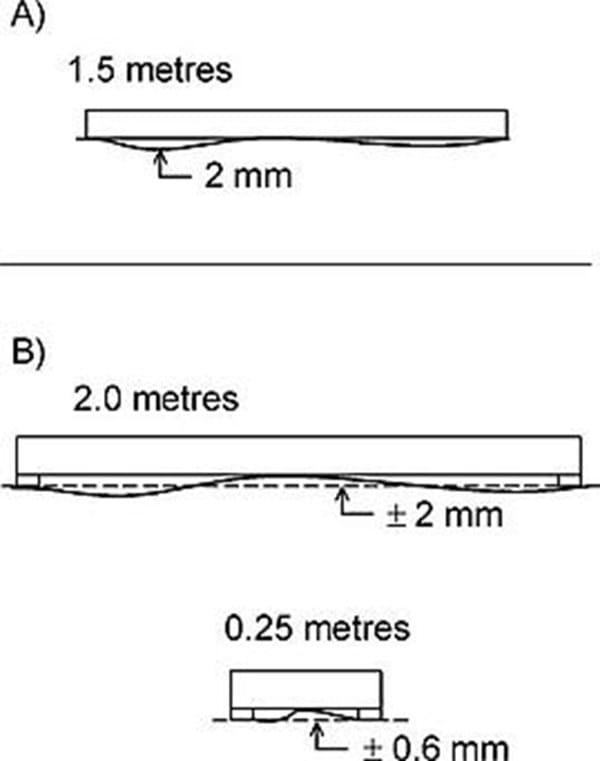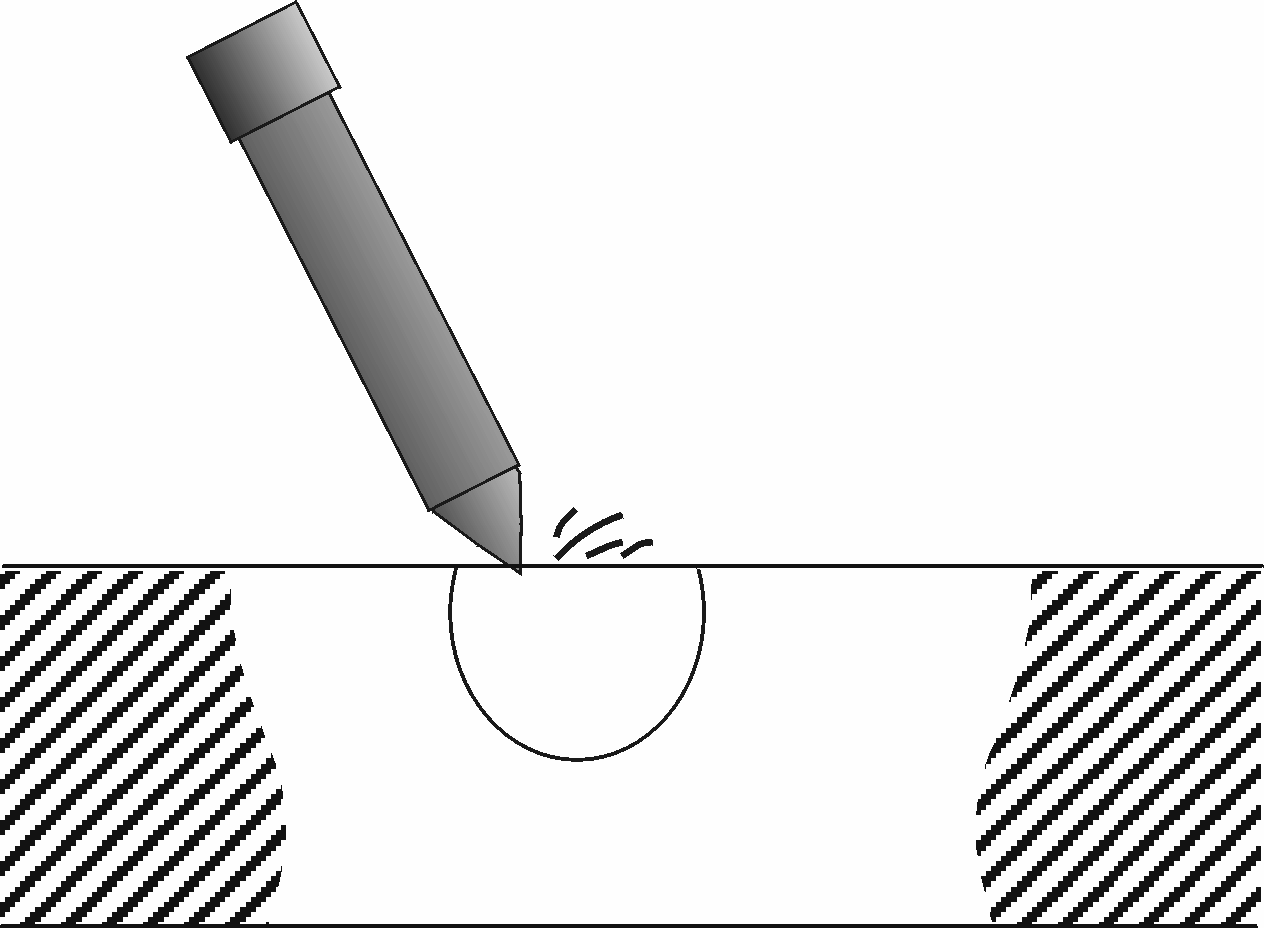GLUE DOWN SYSTEM
Solid Hardwood Flooring | Glue Down System Information
C 1.3
C 1.3
Fig. 1
C 1.0 General Information
C 1.3 Glue Down System Information
C 1.3.1 Specifier's Information
C 1.3.2 Laying Instructions
Introduction
This information describes the general conditions for use and specification of Junckers Glue Down System for residential and commercial use. The Glue Down System consists of Junckers solid floors which are glued onto a flat and self-supporting subfloor using Junckers Parquet Glue, see H 6.1.
SUB FLOORS
Subfloors can be made of concrete, lightweight concrete, screed or wooden materials.
Wood:
Wooden subfloors of chipboard, plywood or floorboards mounted on battens or a frame
of joists must be of sufficient inherent elasticity with a bearing strength which is adequate for the use of and expected load on the floor. The moisture content of wooden subfloors must be in balance with the relative humidity of the room, i.e. 6-12% moisture
content.
On wood-based subfloors with a risk of moisture penetration, e.g. above crawl spaces, etc., effective ventilation of the subfloor must be ensured, and that the underside of the
structure is open to diffusion.
Concrete:
The Glue Down System cannot use a conventional damp-proof membrane on laying the floor. It is therefore very important to ensure that the surface of the subfloor is smooth, clean and dry. The residual moisture in the subfloor must thus not exceed 75% RH, which must be checked by measuring, see Measurements of moisture in subfloors.
In case floor laying needs to be done, with a moisture content between 75-95 % RH in the concrete subfloor, or in case of underfloor heating, apply Junckers Liquid Moisture Barrier before gluing, see H 6.5.
If several types of subfloor make up the same floor area, the subfloor must be of uniform elasticity and flatness to ensure that the final flooring is of a consistent nature.
Fig. 2

THE SURFACE OF THE SUBFLOOR
The surface of the subfloor must be smooth and clean, i.e. any slurry, etc. must be removed. The adhesion of the glue may be compromised, as the slurry surface may not be strong enough to cope with the elasticity of the glue when the boards expand throughout the year.
To ensure smooth absorption and improved adhesion, as well as to strengthen abraded concrete edges and existing adhesive residues, we recommend that you use Junckers Liquid Moisture Barrier as a primer on strongly absorbent subfloors, see H 6.5.
FLATNESS OF SUBFLOOR
The subfloor must be levelled so that any deviations in the flatness do not conflict with the requirements of one of the two methods stated below, see Fig. 2.
A) Traditional straight edge:
The subfloor must be flat with a maximum deviation of 2 mm under a 1.5 m straight edge. (UK: 3 mm under a 2 m straight edge). Deviations are measured as gaps under the straight edge. The surface must be smooth.
Any minor irregularities must be corrected.
B) Straight edge with supports:
The subfloor must be flat with a maximum deviation of ± 2 mm under a 2 m straight edge (2 mm supports). The surface must be smooth. Any minor irregularities, e.g. across day joints, must be corrected so that the maximum localised deviation from flat level is ± 0.6 mm under a 0.25 m straight edge (0.6mm supports).
Major irregularities on concrete floors can be corrected by using a self levelling compound. Junckers Technical Information specifies the flat level requirements of subfloors as a maximum deviation of 2 mm under a 1.5 m straight edge (UK: 3 mm under a 2 m straight edge).
Fig. 3

MEASUREMENT OF MOISTURE IN SUBFLOORS
Measurement of the dampest areas of the subfloor is carried out by non-destructive measuring methods, e.g. with a capacitive moisture gauge, which is designed to detect different moisture contents. When the areas of the subfloor with the highest moisture content have been detected the residual moisture is determined using a destructive measuring method. Measurements must be made at regular intervals over the entire surface of the floor, with the number of measurements depending on the total floor area, see Fig. 3.
Either of the following two destructive measuring methods may be used to determine the residual moisture in the underfloor.
Fig. 4

Measurement of moisture content in situ:
The moisture content is determined in a number of drilled holes or channels cast in the floor. The holes are drilled to a depth of approx. ½ x the thickness of the floor construction and with a diameter which allows the measuring instrument's sensor free passage. Carefully vacuum the hole to remove dirt and dust from the concrete. Place the moisture gauge in the drilled hole with a close fitting barrier seal (airtight), see Fig. 4.
The relative humidity of the drilled hole and the residual moisture of the concrete will after some time - up to a period of several days - be in equilibrium and can then be read from the moisture sensor. The temperature of the subfloor must be 17-25° C when measurement is performed.
Fig. 5

Measurement of moisture content of samples:
To avoid heating or dampening of the samples these are removed from the floor. Leave the samples in a closed container and take them to a laboratory. Take out samples at the floor depth whose moisture content you wish to determine, see Fig. 5.
NB: Assessment and estimation of the moisture conditions of a structure requires specific technical knowledge and experience. We recommend that you leave this to a moisture specialist.
